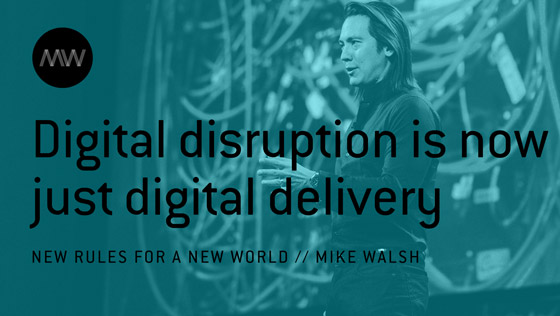The Real Question is This: What is Possible in an Age of AI that was Not Possible Before?
The biggest danger in any crisis is anticipating a return to normal. As vaccine programs roll out worldwide, organizations and governments are preparing for economic recovery, a return to offices and corporate travel, and a resumption of business as usual.
The COVID-19 crisis, however, was not a pendulum now on the return swing to normal; it was a portal from the world we knew, to a radical new future that we are yet to fully understand.
While for many of us working from home has been a new and unexpected challenge - that is just the start of a much bigger transformation set to reshape the nature of business itself. In order to survive, every organization will have to virtualize.
Whether it be serving customers through digital channels or leveraging AI, algorithms and automation to ensure business continuity - we are likely to experience in the next twelve months, a decade's worth of change. Not every business will make it, but those that do will never be the same again. And for leaders, now more than ever, is a time to upgrade their capabilities, embrace new technologies, and reimagine what they do.
Becoming future-proof is more than just about getting through the current crisis - it is about being ready for the new world that awaits us on the other side.
Rule #1: Digital Disruption is Now Just Digital Delivery
We are all disruptors now. Being digital is nothing special, it is just the price of staying in business. The real question is this: what is possible in an age of AI that was not possible before?
Rule #2: There is No Remote Work, Only Work
Remote work is just the beginning of a much bigger transformation that is set to transform the nature of work itself. The true future of work will be shaped by five forces: mobility, autonomy, memory, objectivity and velocity.
Rule #3: Robots are Not Coming for Our Jobs, They are Here to Change Them
AI will not destroy jobs, but it will change them. A new world needs new kinds of capabilities - and that means that we need to evolve and upgrade, just as our machines do.
Rule #4: Experiences Matter more than Transactions
What did we learn about the future of retail, when the world’s stores had to close? Whether it be an app or a showroom, engaging experiential design is what really counts.
Rule #5: The Best Way to Lead is to be Data-led
Being a leader in the Algorithmic Age requires a very different approach. We all like to claim to be ‘data-driven’, but in truth, what we really need to be is ‘data-led’.
Rule #6: There is no New Normal
What if the new normal, is not normal at all? Thanks to COVID-19, we are now living in a radically different reality - robotics, VR, automation, protests, surveillance, fake news. The first step to survival is acknowledging that there is no going back from this.
Rule #7: XR is the New Reality
XR or virtual reality, augmented reality and mixed reality are all on the brink of becoming mainstream technologies that will transform how we live and work. Now is the time to reimagine the way we interact with our customers and create radically new experiences not possible before.
Rule #8: Social distancing is Here to Stay
Social distancing is more than a pandemic response, it is a preview of an AI-powered world in which we deliver products and services using automation and machines with minimal or no human contact.
Rule #9: The Future of AI is Personal
We are fast accelerating to a future in which we will interact with applications with our voices rather than screens, but before we get there, we need a new, more personal approach to AI - virtual assistants that are a digital extension of ourselves.
Rule #10: The Future Favors the Bold
This is no time to settle for survival as a second prize to success. After the chaos of 2020, we need bigger dreams than just recovery. What matters now is reinvention, nothing less.




